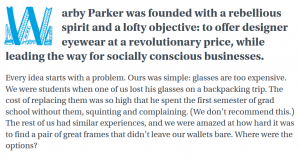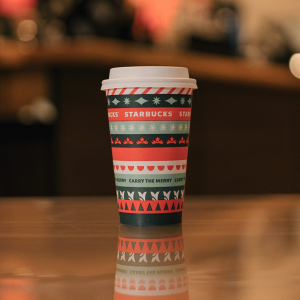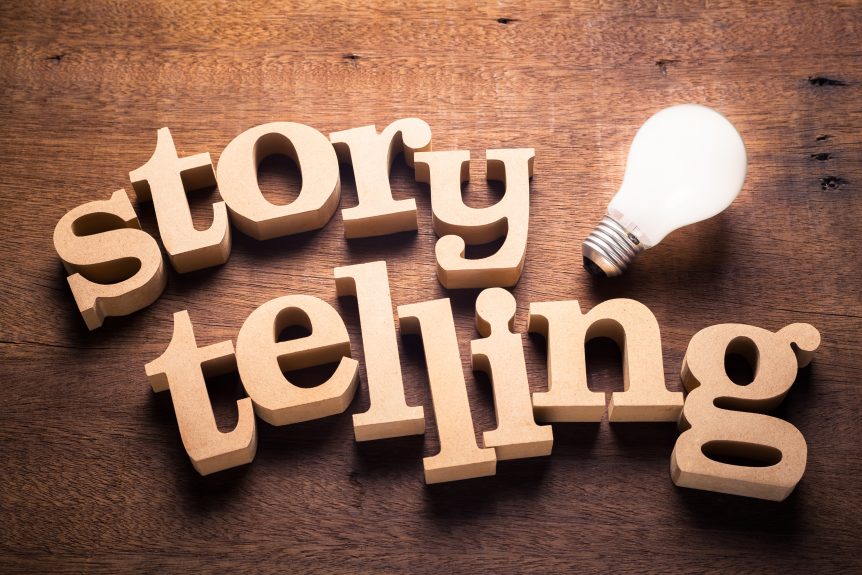Brand storytelling is a powerful marketing tool encapsulating everything consumers experience regarding your business. It is a means by which to form connections with customers in a way digital interactions cannot. Social media and commercial advertisements lack human connection, however, a solid brand story lends a personal element to an otherwise cold, impersonal experience.
Masterful brand storytelling employs narratives that communicate a company’s values and convictions in a meaningful way that directly impacts consumer behavior. In fact, 55% of consumers choose to buy from companies simply because they fell in love with the brand story. Forty-four percent of those consumers will share the story and 15% will rush to purchase the product immediately.
Solid brand storytelling empathizes with the consumer at the core of its marketing message. Empathy makes the story stick and fuels the business-to-consumer relationship as customers feel understood, primed to take action by purchasing your product or service. Vulnerability and authenticity are the pillars of human connection and solid brand storytelling presents an honest journey full of conflict, victories, and surprises experienced by real humans. When businesses are transparent and truthful about their journey, trust is born and customers become converts.
While solid branding goes well beyond a clever logo, the logo is where the story begins. It is the introduction of your target audience to your brand’s story and is powerful in influencing a consumer’s opinion of your brand as it communicates what your brand is all about. A great logo is recognizable independent of the company’s name and can trigger assumptions of importance, leisure, affluence and more. For example, IBM incorporated bold, futuristic designs reflective of the company’s technological expertise.
 Color pallet is a crucial component of brand storytelling as colors have the ability to stimulate hormones and evoke emotions.
Color pallet is a crucial component of brand storytelling as colors have the ability to stimulate hormones and evoke emotions.
Color sets the tone for your story as red is known to solicit feelings of warmth while commanding attention. Blue communicates responsibility and ambition while evoking feelings of confidence, intelligence and authenticity. Color psychology is a key component of brand storytelling and is equally important as a business’s scalability.

Great copy reflects the rest of your branding elements while engaging your target audience, enhancing the tone of your brand’s story in a way which color cannot.
Copy is authentic written material designed to draw the positive attention of consumers who are far more interested in understanding how you can help them solve a problem rather than technical specs. The reasons they should buy from you should be highlighted along with the mission of your company in a way that allows consumers to envision how your story fits into theirs. Consumers want to be naturally drawn in and not “sold to.”

The use of generic stock photos in brand storytelling is a big mistake. Stock photos cannot effectively represent a truly authentic brand and are often misleading regarding a company’s mission, products and services. Effective, authentic visual imagery enables users to connect and engage with your brand across all channels of marketing, creating interest while strengthening your brand story.

Brand storytelling imagery needs to be enticing and memorable while painting a picture for consumers. Whether incorporating vibrant videos, authentic photography or a combination of text and graphics, your imagery needs to reflect your brand’s values while lining up with your story. If you are an accountant, don’t use a stock photo of a goldfish in a bowl to communicate your story. It doesn’t align with your company’s mission or product and simply does not match your brand.

SUMMARY:
Effective brand storytelling simplifies sales and marketing as it attracts leads and builds a loyal consumer base saving you valuable time and resources. Consumers are tired of endless ads, commercials, and emails. They are more attracted to compelling content delivered in the form of a memorable story that communicates that your product enhances their daily lives. A great story can express your brand promise and value in a way that consumers want to absorb because they appreciate feeling in charge. Your brand storytelling enables you to sell to consumers without making them feel they have been “sold to.”



